
 |
|
| Donate for the Cryptome archive of files from June 1996 to the present |
16 July 2003. Thanks to D, add nine photos from National Audit Office report on GCHQ published today.
Source
CESG in the foreground, GCHQ behind.
This shows CESG with the GCHQ building site at upper left prior to construction.27 November 2003: I. writes, "The 3rd photograph which is captioned "This
shows CESG with the GCHQ building site at upper left prior to construction"
is actually a photograph of the other GCHQ site at Oakley, not the Benhall site
which is the one being developed.More photos from the NAO report below.
15 July 2003. Thanks to S., add aerial photos and maps from MultiMap.com
12 July 2003. One of the Eyeball series.
Cryptome welcomes drawings and plans of the new GCHQ described in the Telegraph report below. Send to info on Cryptome home page.
GCHQ: http://www.gchq.gov.uk
From: keith hancock (kraksherpa@netscape.net) Subject: Plans for new GCHQ go on view to public Newsgroups: soc.culture.lebanon Date: 2000-11-19 00:34:33 PST Sunday 19 November 2000 Plans for new GCHQ go on view to public http://www.telegraph.co.uk/et?ac=003100565149417&rtmo=as8wpxsL&atmo=HHHHHH8L&pg=/et/00/11/19/ngchq19.html By David Bamber and Chris Hastings PLANS for the Government's new £543 million GCHQ spy headquarters that show extensive details of the top secret site are freely available to the public, The Telegraph has discovered. The documents show the entire layout of the site, which features a new circular building with a central courtyard. This became known locally as "The Doughnut" - a name now officially recognized by GCHQ management who expect it to be as well known internationally as the Pentagon. The plans show details of access roads, the position of entrances and exits, and the location of security checkpoints. The position of other buildings, including the logistics unit, are clearly shown. The documents also detail plans for the exterior design. This latest security lapse is all the more embarrassing because in 1998, Jack Straw, the Home Secretary, pledged to stop detailed plans of sensitive Government buildings being made available to the public. At the time, plans of the MI5 building at Thomas House were made public. Plans of Tony Blair's constituency home in Sedgefield were also revealed. Mr. Straw said: "The Home Office . . . has introduced new procedures to ensure that this cannot happen in any future case." It is still a legal requirement, however, for all Government departments to submit detailed plans of all proposed construction projects to local councils. These must then be made public to anyone who inquires. Nigel Jones, the Liberal Democrat MP for Cheltenham where the site is based, said: "I think it could be regarded as inappropriate for papers like this to be made available to the public." He said that the plans had to be made public under Government regulations because private capital was involved in the new building. Mr. Jones said: "Under the old system GCHQ was free to do what it wanted, although at the same time the council could kick up a fuss if it didn't like what was being proposed. "Documents like this would not have been left in the public domain. Personally I was quite content with the previous system." According to the detailed plans, available from Cheltenham borough council, the new GCHQ building, which is used for intercepting communications, has been reduced by one storey from its original plans. Hundreds of public documents are included in the files giving details of the elevation of buildings, the height of fences, location of embankments, trees and drains. Anyone who visits the council building is able to photocopy for free the sensitive and detailed plans. The vast new building, currently Europe's largest construction project, will house more than 4,000 workers when it is completed. The Government decided in 1999 to combine GCHQ's two existing sites in a large central new office. Although originally budgeted at £60 million the costs soon rocketed. When finished it will be fitted with the latest communications interception equipment and computers which will make it the most up-to-date spy headquarters in the world. Last night a GCHQ spokesman said: "We are aware that these plans are being held by the council and available to the public. We have no problem with that."
http://www.eyespymag.com/bnews5.html
[Excerpt]
Source
View of model at night.
SourceGOING ROUND IN CIRCLES
In the past year Cheltenham has seen a heavy increase of lorries due to the construction of the brand new GCHQ building at its existing site of Benhall, where the Oakley site will also move to on completion in 2003, combining both within one secure structure. The large round construction with its open court yard big enough to accommodate the Albert Hall in the centre has become known locally as ‘The Doughnut’ and is being constructed by a consortium of three major companies, Group 4, British Telecom and Carillion (formerly Tarmac) who have combined to create IAS (Integrated Accommodation Services). Other major companies with an interest in this project include Gensler, Scott Wilson, Crown House Engineering, O’Rourke [Civil Engineering], Schmidlin, Hewetson, Ashurst Morris Crisp, the Bank of America and the NSA from whom GCHQ sought permission on certain aspects of its construction.
Gensler Architects, architect of the new building: http://www.gensler.com
London office: [gensler.co.uk, 209.67.50.203, not accessible to public]Roman House, Wood St., EC2Y 5BA, London, UK
Telephone: (44-20) 7330-9600 Fax: (44-20) 7330-9630
(In UK, dial 0-20)
SourceThe New Accommodation Program Director for GCHQ estimates that over 30 years, the four-story, 1.1 million square foot office complex will save the UK Government many millions of pounds over a conventionally developed and operated alternative.
"A lot of the enthusiasm the new complex generated came from its bold, iconic design." This compliment is from Tony Harden, who has directed its construction. Its shape has a dual purpose - it both secures the building against incursion and creates a large central outdoor space that people can use informally without having to pass through checkpoints.
Detailed design is where much of the added value was captured. From the beginning, Gensler envisioned the complex as a humane, flexible, and sustainable workplace. Natural light and ventilation are key elements in this strategy. The exterior window wall and clerestory windows both bring daylight into the interior, helped by the shape of the complex. The building has "lungs" in the form of an interior "street," open to the roof, that removes hot air, and a system of raised floors, chilled beams, and a double-skin exterior wall "thermal chimney" - measures that will reduce its energy use by 40 percent.
Durability is another an obsession. Granite is used extensively in areas of high wear, for example, and the cooling towers use stainless steel tanks and trays, because this will extend their life by two decades. PFI requires that the winning consortium operate the building for 30 years. Given this timeframe, the business case for materials and systems consistently favors higher quality alternatives.
GCHQ will start occupying its new complex in the summer of 2003, but most of their employees have already toured it. The typical reaction to it, according to their Business Change Manager, is "I can't wait to move in."
http://www.parliament.the-stationery-office.co.uk/pa/cm200102/cmhansrd/vo020507/text/20507w38.htm
CoolantsJane Griffiths: To ask the Secretary of State for Foreign and Commonwealth Affairs what coolant will be used for the building services water chilling system for the new GCHQ building. [52045]
Mr. Straw: The consortium (Integrated Accommodation Services) building the new GCHQ accommodation are using the refrigerant HFC 134A to chill the water. This is a commercially available non-ozone depleting refrigerant.
http://www.ebusinessdirectories.co.uk/BusinessDirectories/pages/cheltenham/NewGCHQ.asp
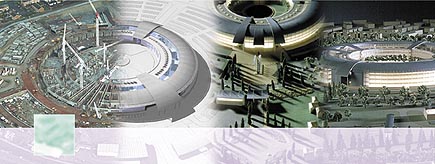
The New GCHQ
A Special Purpose Company (Integrated Accommodation Services Plc) has been created by the consortium of Carillion, Group 4 Falck Global Solutions (UK) Ltd (trading as GSL) and BT. They have a contract to design, build, finance and operate the facility via a £406m bond launch and then, as is usual in PFI (Private Finance Initiative) deals, GCHQ pays IAS for the availability of that serviced facility (ie including maintenance, cleaning, IT, security etc).
Set back from the A40, the new GCHQ building will be a high quality landmark for the western entrance to Cheltenham. Built into a sloping 40 acre site the purpose built facility will at its maximum be four floors high. The building will appear as a light, airy circular building rising up out of a Cotswold stone base.
Its stunning architecture will complement a highly efficient internal operation that the operating consortium will support for the next 30 years.
Construction of the fabulous ‘dough-nut’ design commenced in June 2000 and the £340m building will be completed by the summer of 2003. At this point GCHQ will start to move from their existing two sites at Benhall and Oakley and occupy the new facility.
http://www.btplc.com/Innovationandtechnology/News/LAN.htm
BT builds Europe's largest LANA new £1.1 billion purpose-designed building in Cheltenham - containing Europe's largest local area network - is set to become home to the Government Communications Headquarters (GCHQ) later this year.
The award-winning new facility - named Public Private Finance Project of the Year in the Public Private Finance Awards 2002 - will provide an integrated, flexible, high-tech working environment that the intelligence and security organisation claims will enable it to deliver its mission into the 21st century.
As part of the Integrated Accommodation Services consortium (IAS), BT has fitted out the new GCHQ building - whose circular shape has led to it being dubbed 'the doughnut' - with structured cabling to create Europe's largest local area network.
BT convergent solutions (BTCS) says that to fulfil the contract in a building the size of the old Wembley Stadium required cabling equivalent to the distance from Cheltenham to Mexico City if laid out end-to-end between the cities. To put it another way, adds BTCS, it had to install 6,000 miles of electrical wiring in office space equivalent to 17 football pitches.
BTCS has partnered with information technology services and solutions company Unisys to implement the project. Engineering teams worked on site throughout the three year construction phase - finished this year - and at times, says BTCS, more than a 100 cabling engineers were on the site to ensure delivery was to schedule and to the standard required.
A multi-skilled maintenance crew - trained by BTCS and including an in-house BT team - will remain to service and support the structured cabling infrastructure at GCHQ for the next 27 years.Dave Parkin, BT's project director in the IAS Consortium, said: "We have worked closely with GCHQ and our consortium partners to deliver a facility that will allow GCHQ to fulfil its national security obligations within a new, exciting and flexible working environment. The deployment of leading edge cabling services acts as a key enabler of that vision."
A spokesperson for GCHQ said: "BT has provided us with a first class cabling infrastructure to knit together our team of 4,000 linguists, mathematicians, analysts and IT and communications engineers."
http://www.fsa.com/corporate/releases/20000615.php
FSA Guarantees Largest Bond Issue under U.K. Private Finance InitiativeNew York, New York, June 15, 2000-Financial guarantor Financial Security Assurance (U.K.) Limited (FSA-UK) will guarantee £406.9 million of 6.48% senior secured bonds to finance the design and construction of a new Government Communications Headquarters (GCHQ) office building. The issuer, Integrated Accommodation Services PLC (IAS), is a special purpose, limited recourse company that will enter into a 30-year concession contract with the U.K. Secretary of State for Foreign and Commonwealth Affairs. IAS will design and finance the new facility and also provide maintenance, site security, and certain other facilities management services. The transaction is the largest bond financing to date under the U.K. Private Finance Initiative (PFI).
The bonds are rated Aaa/AAA based on the claims-paying ratings of FSA-UK, the wholly owned European subsidiary of Aaa/AAA-rated Financial Security Assurance Inc. (FSA). The insurance policy guarantees 100% timely payment of scheduled principal and interest. Deutsche Bank is the sole underwriter, and Bank of America acted as the advisor to IAS.
GCHQ provides U.K. government departments and military commands with signals intelligence, and it plays an essential role in supporting the U.K. government's security, defense, foreign and economic policies. The project will provide 102,000 square meters of state-of-the-art office space in a single building, allowing GCHQ to reduce costs and improve operational efficiency by consolidating operations that are now dispersed among numerous buildings at two different locations. The new facility will be specifically designed to meet GCHQ's extensive technology and security needs.
"This transaction has exceptional strength," said Philippe Tromp, managing director of FSA. "The project is a strategic asset needed for critical government services, the revenue source is the U.K. central government, and a group of experienced, high-quality subcontractors hold the equity. In addition, the concessionaire's operating risks are relatively low compared with other PFI transactions because GCHQ has chosen to retain key operational and information technology risks and responsibilities. FSA's Aaa/AAA/AAA guaranty lowers the financing cost and simplifies the structure to attract the broadest range of investors."
The holding company for IAS is owned by financial subsidiaries of Carillion, Group 4 Securitas NV Group and BT PLC. These shareholders also provided approximately £22 million to IAS through subordinated loan stock. Carillion is one of the largest U.K. construction firms and has extensive PFI contracting experience. It will guarantee the obligations of an affiliate that will be the principal construction subcontractor and will provide capital asset replacement during the term of the concession. Under a facilities provision contract, Group 4, one of the world's largest private security firms, will provide certain accommodation management and support, physical security and other services.
BT, a large international telecommunications company, will install cabling and technical infrastructure subcontracted by Carillion and will provide certain services such as nonsecure telephony and portable communications subcontracted by Group 4.
|
![[Image]](gchq-06.jpg) |
![[Image]](gchq-site.jpg) Source |
![[Image]](gchq-07.jpg) |
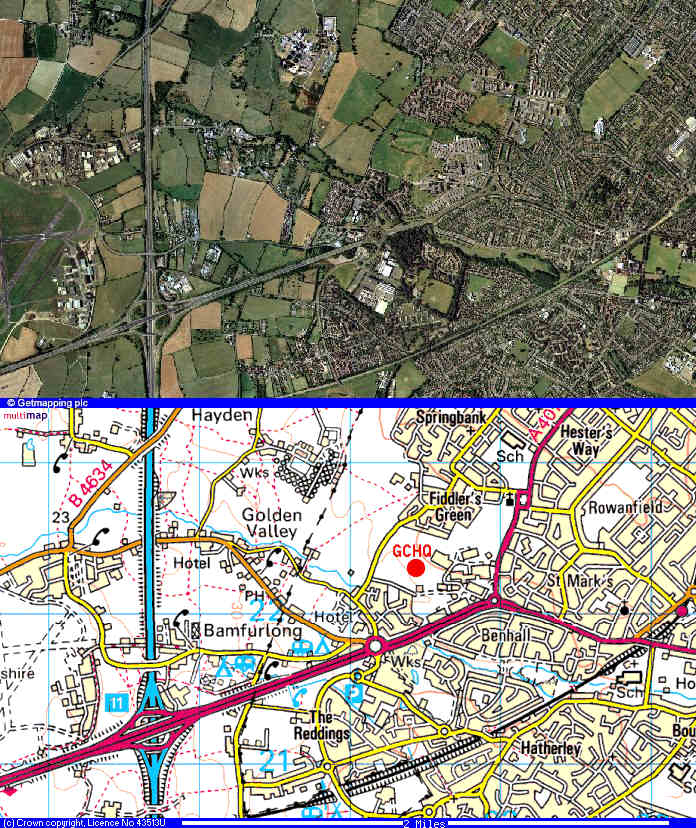 Source |
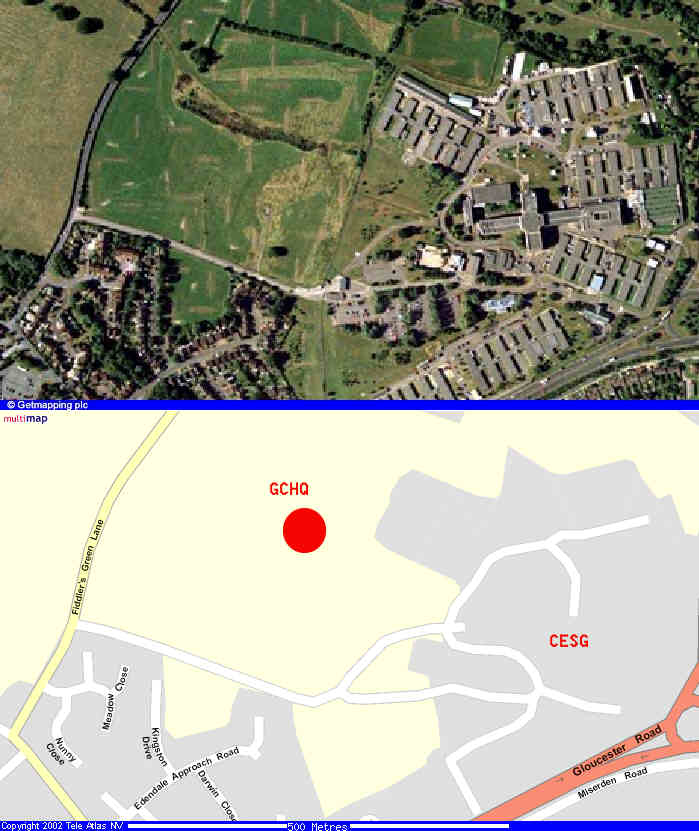 Source |
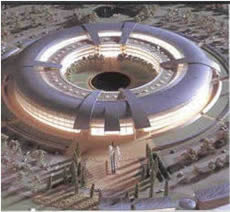
Early version of building model. |
 Later model. Source |
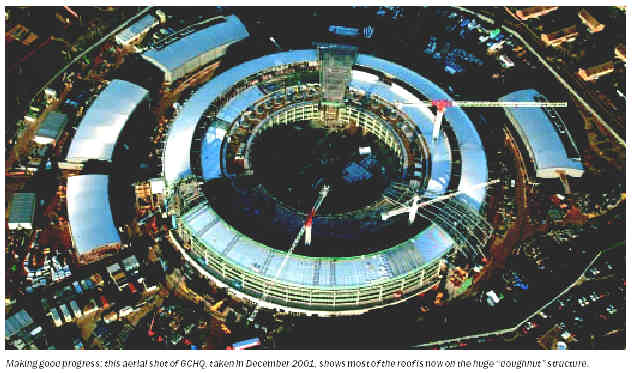 Source |
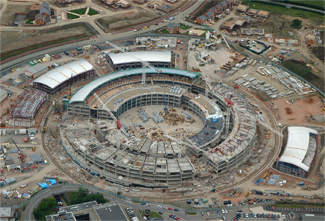 Earlier phase of construction. Source
|
 Facade section. Source |
 Facade section. Source |
 Source |
![[Image]](gchq-gsl2.jpg) Source |
http://www.nao.gov.uk/publications/nao_reports/02-03/0203955.pdf




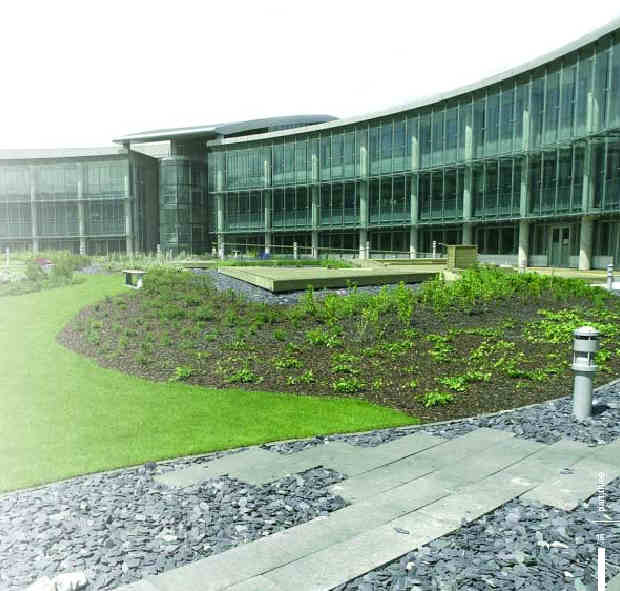
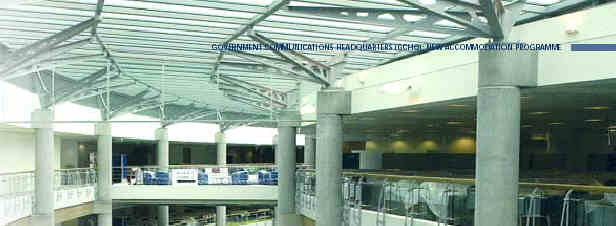
Page 12 of 41
Paragraph no: 10.41-10.42A Proposal:
Table: 8. Dwelling requirement 1991-2011 and Object/support /omission: Object
Map:
Respondent ref no: 59 Organisation: Government Communication HQ
Comment no: 1
Comment received:
The Second Review Initial Deposit Plan contains, at Table 8 a summary of the dwelling requirement and provision at the end of 2001. The Table refers to a total completion and commitment table of 5,433 units. No clarification is provided to identify how this figure has been calculated. GCHQ, through the procurement of its New Accommodation Project via the Private Finance Initiative, has secured outline planning permission for housing and a new district centre at its Oakley site. Consent was granted in October 1998 after the signing of a series of Section 106 agreements. It is envisaged that in the region of 500 units will be developed on the site. The Urban Capacity Study, published in September 2002 acknowledges that 500 units at Oakley and 69 at Benhall will not be developed in the first five years of the Local Plan. The Urban Capacity Study assumes that "These (569) dwellings will be rolled over into the second development phase, post 2007". As such, it is assumed that the Local Plan Initial Deposit makes an allowance, within the Commitment total as set out in Table 8 that these units will come forward in the Local Plan period to 2011.
This assumption is incorrect. Given technical and operational necessities, part of the GCHQ operation will remain on the Oakley site and is unlikely that part of the site will be released for development before 2011/12. A Notice of Proposed Development has recently been submitted to Cheltenham Borough Council setting out the works required to divide the Oakley site. Oakley 1, to the west of the dividing line between Priors Road and the new fence will be released for redevelopment in 2004/5. Oakley 2 will not be released by GCHQ until site clearance remediation works have been completed. This is expected to occur in 2011/12. At that time the site will be available for residential development: forty units of which will be accessed by the Harp Hill junction. In the light of GCHQ’s retained presence on the Oakley site for the Local Plan period, the total number of units that are available to come forward will be in the region of 250-300 (the density of the proposed residential layout will be a matter for the preferred developer). The Local Plan therefore over-estimates the total commitment figure as at 2002 and thus under-estimates the number of dwellings which will come forward in the Plan period. As such, the Local Plan does not identify sufficient land to meet strategic residential requirements in the Plan period.
GCHQ retains land to the south of the operational Oakley site. This area, known as Oakley Farm, is outside the operational area. The extent of the Farm is designated as part of the AONB. This AONB designation also covers part of the operational GCHQ area to the east of the Farm.
During the Local Plan period to 2001, Oakley 1 will be developed for the uses stated above. This is shown on the plan provided. During negotiations with the preferred PFI partner, Integrated Accommodation Services ("IAS"), GCHQ secured agreement that as part of the redevelopment of the Oakley site (Oakley 1), the residential developer will make provision for a new residential estate road to be constructed into the Oakley Farm land. This "hammerhead" will be connected to, and served by, the remainder of the new internal Oakley road system. The new road system, including the junction with Priors Road has been designed to accommodate a small incursion into the AONB should additional land be developed. The number of residential units to be served by the proposed connecting road is limited to 100 units. GCHQ consider that the release of an area of the farm land for development would allow the resultant units to be constructed in the latter phase of the Local Plan period (post 2007).
Following the development of Oakley 1, the proposed development area (see attached plan) will be bounded on three sides by residential uses. GCHQ consider that opportunities exist to deliver, in Requested change:
Given the retained presence of GCHQ on Oakley 2 and expected release date of the site, the Second Review Initial Deposit over-estimates the number of dwellings that are capable of being delivered as part of the redevelopment of the Oakley site in the Plan period. As such, the Plan does not identify sufficient land to meet strategic residential requirements. Table 8 will therefore need to be reviewed.